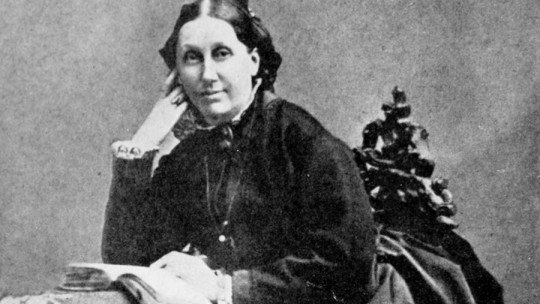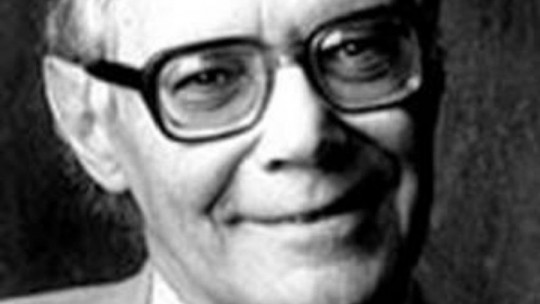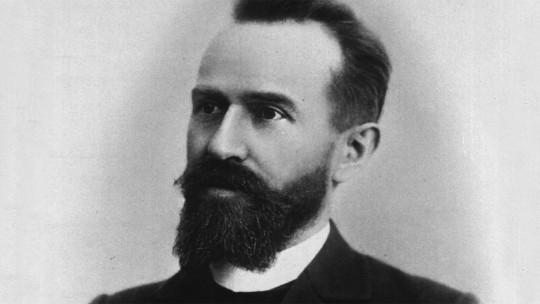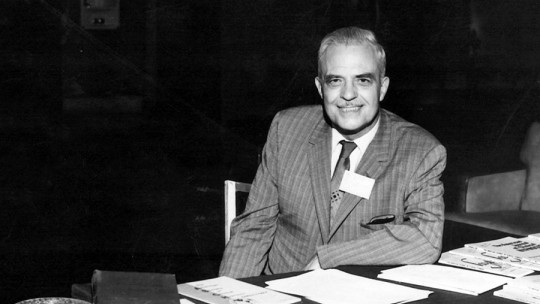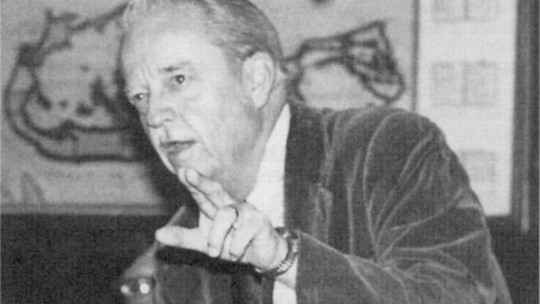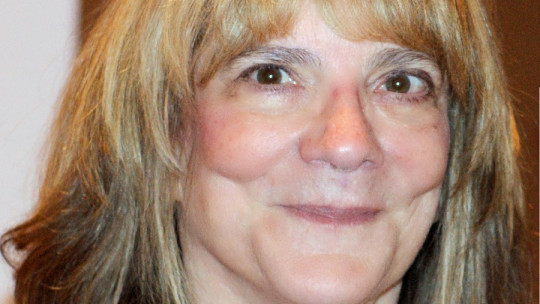
Many believe that the brain is like a computer and, as such, we store many memories completely and intact. When we try to remember we think that what we are remembering is indisputably true, that it is exactly how we experience the remembered event.
However, this is not so. Memories can become distorted over time, and even more so if we talk about those that are associated with traumatic experiences. Taking this into account, the following question is inevitable: can our mind create false memories?
The American psychologist and mathematician Elizabeth Loftus has dedicated her entire life to answering this question, motivated by the experience of a traumatic event in her youth and knowing how reliable the testimonies of victims, accused and testimonies of crimes are. Below we will delve deeper into her life and her research through a biography of Elizabeth Loftus
Brief biography of Elizabeth Loftus
Elizabeth Loftus, born Elizabeth Fishman, was born on October 16, 1944 in Los Angeles, California. His parents were Sidney and Rebecca Fishman. At just 14 years old, young Elizabeth experienced the death of her mother due to a drowning accident.
Rebecca Fishman’s death shocked her entire family and, at the same time, was what sparked young Elizabeth’s interest in memory. After the death of her mother, Elizabeth He didn’t remember much about the accident… had he repressed it?
However, during one of her uncle’s 44th birthday celebrations, a relative told Elizabeth that she had been the first to see her mother’s lifeless body. Based on this, Elizabeth Loftus began to “remember” little things and became convinced that they were true. But to her surprise, it was later confirmed that she was not the first one on the corpse, but that one of her aunts did it.
Knowing this Loftus She was surprised at how she had convinced herself of a story that, although apparently true, was nothing more than a conspiracy Because of this, Elizabeth Loftus began to be interested in how human beings, based on very little information and suggestions, are capable of creating false memories, memories that are not true but so vivid that it is even unquestionable that they are more than an invention.
In 1966 he obtained a bachelor’s degree with honors in Mathematics and Psychology from the University of Los Angeles. Later he would enter Stanford University, where he would obtain his doctorate. In the 1980s he began to address memory in more depth. In those years he began to study various cases of child abuse and how long-term memory worked. She was very interested in knowing how the repressed memories related to the traumatic situation experienced by the victims emerged.
He did several investigations and based on his findings, Loftus very critically questioned the human being’s ability to truthfully recover memories and information, especially when these memories have been repressed by some defensive mechanism of our mind. The primary research focus throughout his entire career has been to understand how information is organized semantically and gives rise to long-term memory.
Based on these findings, Elizabeth Loftus considered that her work must have some social relevance, so began to empirically study the testimony of witnesses in trials based on the misleading information paradigm Thus he began to conduct many investigations into memory and the relationship it has with the degree of reliability that a witness’s testimony can have in a trial.
Loftus’ research has presented numerous evidence that a person’s lived experiences can be altered when they try to remember, and appear real and reliable despite being a biased memory. This is especially common in memories of childhood sexual abuse when they are recovered both in the course of forensic investigation and during psychotherapy.
Visions of Loftus brings memory closer
It is important to understand that when Elizabeth Loftus began her career in research, cognitive psychology, which among other things studies memory, was beginning to reveal new aspects about how the brain and mental processes work. Memory has been one of the topics of most interest in this branch of psychology, as it is the basis of learning and even being a fundamental aspect in providing people with identity.
But besides this, The study of memory has a key importance in the judicial field: It must be determined to what extent a witness’s memory is reliable. Loftus focused on studying the possibility not only that these people’s memories could be completely changed, but also that other people could introduce false memories into them. This is why Elizabeth Loftus has been consulted as a testimony expert and her work has been used in the field of forensic investigation.
According to Loftus herself, the legal system is very concerned and takes precautions to avoid contaminating the physical evidence present at the crime scene, such as hair, blood, semen, torn clothing… However, the same precautions are not taken. when it comes to preventing witnesses’ memories from being contaminated. Thus, during interrogations the memory of witnesses can be conditioned by asking them suggestive questions, which can have an immense effect on their testimony.
Elizabeth Loftus’ career has been very controversial because her research suggests that the testimony of victims, witnesses and even the accused himself is not entirely valid No matter how sincere they are in the course of an investigation, there is no way to ensure that their memories are genuine. They may have been manipulated by lawyers, investigators and even the judge himself may have accidentally influenced them by asking a suggestive question.
But despite the controversies, Loftus is one of the most valued figures in psychology. He has published more than 20 books and nearly 500 scientific articles on false memory. In addition, he has been awarded several recognitions, such as the “Gold Medal for Lifetime Achievement” awarded by the APA. In 2002 she was recognized as one of the most influential psychologists on the General Psychology List of the 100 most influential researchers of the 20th century, ranking 58th and being the highest-ranking woman on the list.
Research on memories
The idea of memory in popular culture and even in some professional circles is that the brain works like a computer. Based on this belief, memories remain stored and isolated from the rest of mental processes and phenomena, becoming conscious when the time comes when we need to remember that experience or knowledge. We think of memory as simply storing and retrieving files
However, this is not entirely the case. Although many memories are intact, sometimes they are not exact: they are remembered in a blurry, distorted way and with gaps. To fill in these gaps we conspire, we unconsciously add false information or we allow ourselves to be influenced by other people who tell us how the events were, changing our memory and thinking that this new version is the reliable one.
This fact had not been demonstrated empirically until Elizabeth Loftus investigated it thoroughly. Through her experiments, she demonstrated that memories are not something that is stored intact and that they can be mixed with others to the point of completely changing, thus creating false memories.
The car experiment (Loftus and Palmer, 1974)
One of the most famous experiments on memory was the one carried out by Elizabeth Loftus and JC Palmer with 45 volunteers who They were presented with a recording showing two cars colliding with each other After presenting this recording, the researchers discovered something really curious.
After viewing the recording, the volunteers were asked to remember what they had seen. To do this, they used a very specific phrase to tell them that they had to remember what they had seen:
“About how fast were the cars going when they… each other?”
“How fast were the cars going when… each other?”
This was the part where some volunteers and others received subtly different instructions. For some volunteers, the phrase used contained the word “contacted”, while for others the same phrase was used only that word was changed to “hit”, “collided” or “smashed”. (crushed). The volunteers were asked to give their opinion about the speed at which the two vehicles they had seen were going
As we said, all, absolutely all of the volunteers saw the same thing. However, Elizabeth Loftus noticed something truly surprising, since when they were asked to remember what appeared in the video, the phrase used altered their memories. Those who were given instructions with the words “contacted” and “hit” said that the vehicles were traveling at a slower speed compared to those who were given a phrase containing the words “collided” or “hit.” smashed.”
That is, the degree of crash intensity suggested by the words used by the research team influenced the perception of speed. The memory of the scene they had seen changed in the minds of the participants. With this experiment, Loftus and Palmer provided evidence about how information given in the present can alter memories of past events.
The shopping center experiment (Loftus and Pickrell, 1995)
Another very famous Loftus experiment is that of the shopping center, an experiment that showed that it was possible to introduce false memories through something as simple and unintrusive as suggestion. This research had a greater degree of complication, since to carry it out it was necessary to have personal information about the lives of the volunteers. For this, Loftus had the help of friends and family of the participants.
During the first phase of the research, the volunteers were told, one by one, four anecdotes about their childhood. Three of these memories were real, data told by people close to the volunteers; However, the fourth memory was completely false. Specifically, it was about the story of how the participants had gotten lost in a shopping center when they were little totally fictional story.
The next phase occurred a few days later. The volunteers were interviewed again and asked if they remembered anything about the four stories that had been explained to them in the first part of the research. One in four people said they remember something about what happened when they got lost at the mall, a memory that, as we have mentioned, was completely fictitious.
But also, when It was revealed to them that one of the four stories they had been told was false, they were asked to guess which one was fictitious. Many guessed correctly and knew how to see that it was the one in the shopping center, but 5 of the 24 participants failed to give the correct answer. Those 5 people really believed that they had gotten lost in the shopping center as children, having a very vivid and real memory.
This research showed that with very little effort, Loftus and other researchers were able to introduce a false memory into the participants’ memories.
Implications of these investigations
These experiments managed to demonstrate that, contrary to what common people believe, memories are not stored intact They can easily be altered intentionally, either by using specific questions, false information, or through the suggestion of someone the person trusts. They can also be altered by experiences after the event to be remembered or even by our emotions. It is truly revealing and horrifying that it is possible to introduce completely false scenes into someone’s mind and have them believe them as if they were absolutely real.

